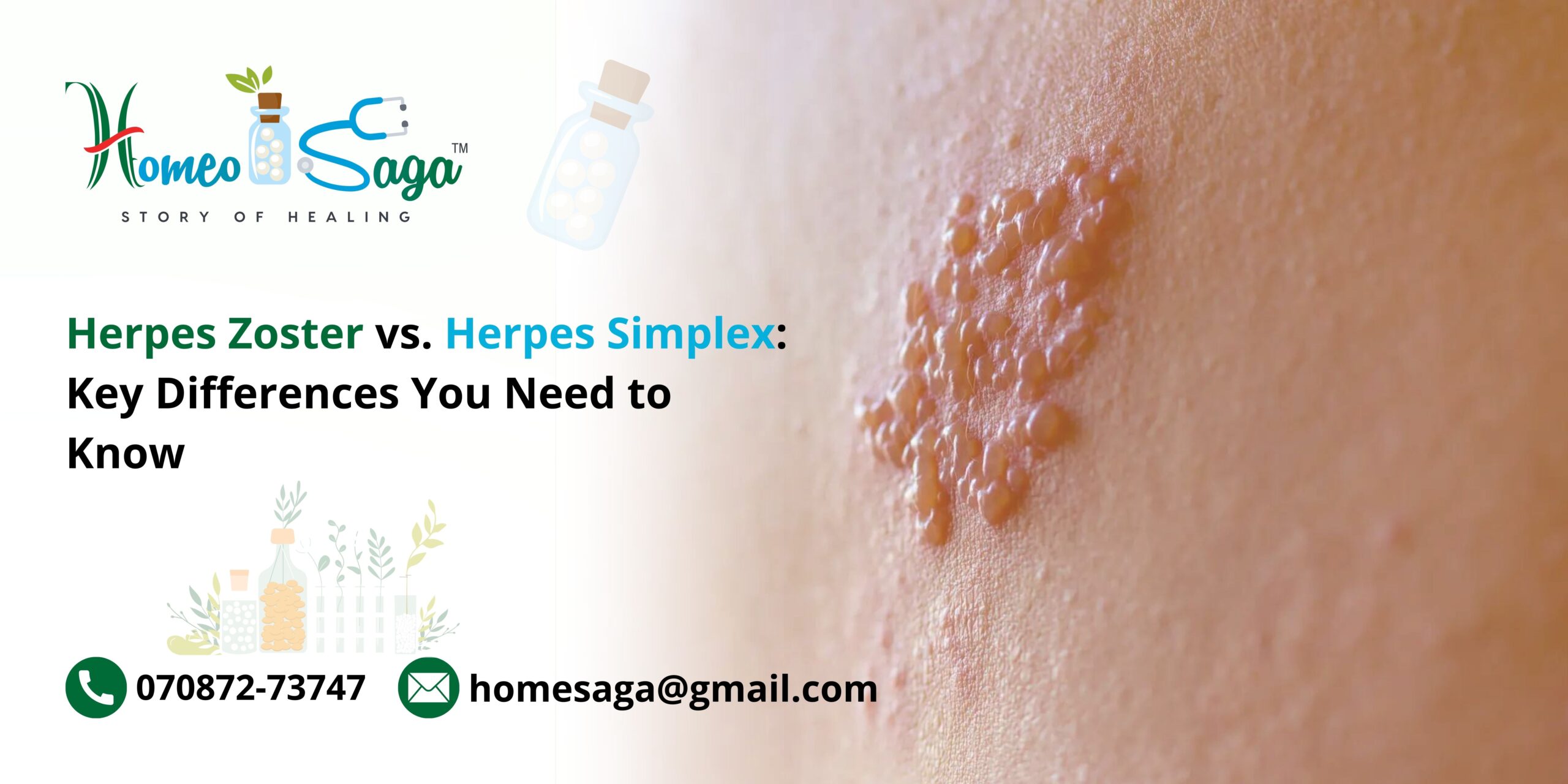In the world of viral infections, Herpes Zoster and Herpes Simplex are two terms that often arise. While both belong to the herpesvirus family, they are fundamentally different in their origins, symptoms, and treatment approaches. This article aims to clarify the distinctions between Herpes Zoster and Herpes Simplex, providing you with a deeper understanding of each condition.
What is Herpes Zoster?
Herpes Zoster, also known as shingles, is caused by the varicella-zoster virus (VZV), which is the same virus that causes chickenpox. After a person recovers from chickenpox, the virus can remain dormant in the body and may reactivate later in life, particularly in older adults or those with weakened immune systems.
Symptoms of Herpes Zoster
The symptoms of Herpes Zoster can include:
- Prodromal Symptoms: Often, the condition starts with a burning or tingling sensation in a specific area before the rash develops.
- Rash Development: A painful rash typically appears on one side of the body, usually forming clusters of fluid-filled blisters.
- General Symptoms: Fever, fatigue, and malaise may accompany the rash.
The pain associated with Herpes Zoster can be severe and may persist even after the rash has healed, leading to a condition known as postherpetic neuralgia.
What is Herpes Simplex?
Herpes Simplex refers to two different viruses: Herpes Simplex Virus Type 1 (HSV-1) and Herpes Simplex Virus Type 2 (HSV-2). HSV-1 is primarily linked to oral herpes, causing cold sores, while HSV-2 is usually responsible for genital herpes, leading to sores in the genital area.
Symptoms of Herpes Simplex
Symptoms can vary depending on the virus type:
- For HSV-1:
- Cold sores or fever blisters around the mouth
- Painful lesions inside the mouth
- Swollen lymph nodes
- For HSV-2:
- Painful blisters in the genital area
- Itching or discomfort in the affected region
- Flu-like symptoms during the initial outbreak
Key Differences: Herpes Zoster vs. Herpes Simplex
Understanding the key differences between Herpes Zoster and Herpes Simplex is crucial for effective diagnosis and treatment. Here are the main distinctions:
- Causative Virus:
- Herpes Zoster is triggered by the varicella-zoster virus, whereas Herpes Simplex is caused by either HSV-1 or HSV-2.
- Symptoms and Areas Affected:
- Herpes Zoster typically presents as a unilateral, painful rash on one side of the body, while Herpes Simplex results in sores that can appear on the lips (HSV-1) or in the genital area (HSV-2).
- Infection Dynamics:
- Herpes Zoster arises from the reactivation of VZV after a prior chickenpox infection. In contrast, Herpes Simplex can occur as a primary infection or recur multiple times.
- Transmission:
- Herpes Zoster can be contagious, transmitting the varicella-zoster virus to individuals who have not had chickenpox. Herpes Simplex is spread primarily through direct contact with active sores.
- Treatment Options:
- For Herpes Zoster, antiviral medications like acyclovir are often prescribed to reduce symptoms. In the case of Herpes Simplex, antiviral treatments focus on managing outbreaks and alleviating symptoms.
Prevention Strategies
Preventing both Herpes Zoster and Herpes Simplex is essential for public health. The shingles vaccine is effective in reducing the risk of developing Herpes Zoster, particularly in older adults. To minimize the risk of Herpes Simplex, practicing safe sex, avoiding contact with active sores, and maintaining good hygiene are critical measures.
Conclusion
In conclusion, while Herpes Zoster and Herpes Simplex share a common family of viruses, they differ significantly in their causes, symptoms, and treatment approaches. Understanding these differences can empower individuals to make informed decisions about their health.
As you explore the topic of Herpes Zoster vs. Herpes Simplex, remember that consulting a healthcare professional is important if you suspect you have either condition. Knowledge is a powerful tool in managing your health effectively and confidently.










